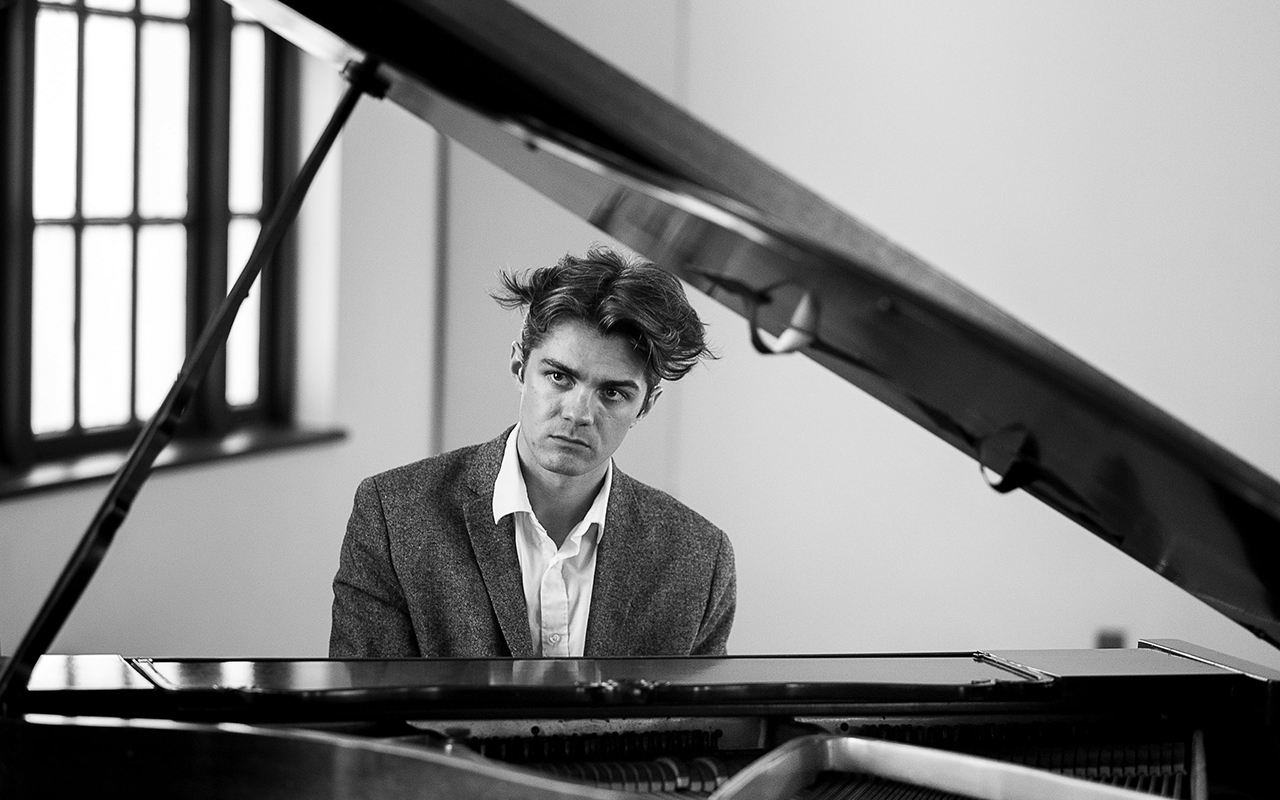
Aaron Otheim photo by Daniel Sheehan
Aaron Otheim and the Jazz Community
Aaron Otheim wasn’t sure he’d have enough time for our interview, but he was calm-voiced, soft-spoken, paused between statements, and held a steady demeanor that felt right for the well-dressed young man. Such composure almost felt out of place in the yellow room of avant-garde paintings, afternoon chatter and horror movies at a bar, but anyone who knows Otheim knows he’s at home in Café Racer.
It’s easy to see his schedule is crowded: he’s a founding member of Table and Chairs, a record label led by UW Jazz graduates, and along with helping organize the weekly Racer Sessions jam at Café Racer on Sunday evenings, he plays keyboard with seven groups, mostly with Table and Chairs, including the mock-pop Heatwarmer, led by Luke Bergman; the heavy-jazz Hardcoretet; and the alt-jazz Burn List, led by Cuong Vu, who taught Otheim at UW.
Vu thinks Otheim is a powerful improviser: “Coming to jazz later than most was an advantage for him, because he avoided all of the things about jazz that permeates many of its general practitioners, such as cliches, rote and dogma of jazz,” Vu writes in an email.
Bergman also emails, “The music never stagnates when he’s playing, because he knows when to steer things in a new direction with a clear and engaging idea.” Both musicians point to Otheim’s strong sense of compositional direction in improvisation.
A major aspect of the young pianist’s improvisation is timbre variation. He says, “The stuff that grabs me the most tends to have a very definitive sound identity to it.”
This is easy to hear in his performances. Long, drawn-out synth chords are familiar in his improvisations, as patiently watches his fellow performers and carefully adjusts his synthesizer options with the expression of a scientist mixing chemicals. He’s also known, particularly with Hardcoretet or Burn List, to draw together ethereal backdrops with sustained single notes of a more traditional electric keyboard sound, or to mash harsh rhythmic staccatos when needed.
Vu values this texture variation. Otheim’s attention to timbre reflects “incredible depth of sound perception and conception,” Vu writes. “He always provides the right sonic environment for every musical context, but takes it further by piquing the listener’s curiosity and engaging them with that sonic environment.”
Otheim started piano at age seven, encouraged by his parents because he had already started noodling on their Casio keyboard. “My favorite thing to do was just sit down, play something on one sound, and then switch to another sound and play the same thing,” Otheim says.
Lessons continued, but he was drawn to improvisation rather than composition, even to the point where it discouraged his teachers. At twelve, he switched to a more demanding, “disciplinarian” teacher, still focused in classical, who “lit the fire in me.” He continued at UW in classical performance.
Though he did well, Otheim found his experiences, being limited to solo playing, besides a couple of piano concertos, unsatisfying. In the concertos, “You’re sort of on this pedestal, and the orchestra is backing you up, and there’s no real interaction,” he says. Being the center of attention was not what he was looking for.
Chamber music was Otheim’s first introduction to collaborative playing. That convinced him that “there’s something really profoundly meaningful about playing in a collaborative setting and interacting with people in performance,” he says. He calls it a visceral experience to hear a well-composed orchestra “all working together to create this sound that’s bigger than the sum of all the parts.” His jams with jazz students at the time, like Bergman, made him think he could pursue collaborative music deeper in jazz, and he switched majors.
While Otheim brings awareness of the whole to jazz and improvisation, there’s little doubt that his roots are those of a self-driven classical pianist. Bergman shares: “One time he started playing piano reductions of the score from Star Wars that he had taught himself as a teenager. People began to say, ‘Play the Hoth battle scene,’ or ‘The first TIE fighter scene in A New Hope.’ He would know it with all the right harmonies and then say, ‘He actually took this part from the Rite of Spring, see?’”
Contributing a unique identity to the community feels appropriate here in crowded Café Racer. Otheim says of his work with Table and Chairs: “I can appreciate another person doing what is uniquely them, just as I can appreciate myself for doing what is uniquely me, because I know they appreciate me for being myself … It allows the music to take shape.”